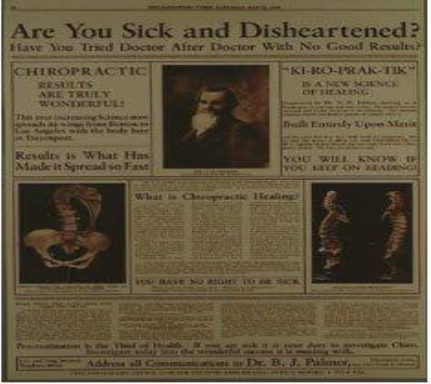Chiropractic clinical case histories have been a regular feature of our patient newsletter since its inception. There is no limit to the health problems that respond positively to chiropractic care.
Fibromyalgia in a 64-year-old
A 64-year-old woman with fibromyalgia was medically diagnosed 6 years before beginning chiropractic care. In addition, she complained of sleep apnea, loss of coordination, glaucoma, degenerative disc disease, and changes in bowel habits.
Using X-ray and other tools, an upper cervical subluxation was discovered at her atlas (C1) vertebrae.
She received upper cervical care for three months. At the time of this study, she reported 80% relief from symptoms and an improvement in energy level. (1)
Scoliosis in a 10-year-old girl
This was the patient’s first time under chiropractic care. Analysis revealed a 16.2-degree right thoracolumbar scoliosis, measured from her 12th thoracic vertebra to her 6th lumbar vertebra.
She was adjusted for three months. X-rays, taken at 3 months, showed a 28.4% improvement in her scoliosis (a decrease of 4.6 degrees). (2)
Meniere’s Disease
A forty-eight-year-old woman, a retired registered nurse, was diagnosed with right unilateral Meniere’s Disease (MD). Her symptoms included many episodes of dizziness with nausea and vomiting as well as drop attacks. She also had low-frequency hearing loss, tinnitus, and a sense of ear fullness with pain.
Chiropractic care consisted of twelve visits over six days. She returned for a reevaluation four months later. All her complaints were relieved, except hearing loss, though it did improve. (3)
Do you know someone with any of these issues?
Please encourage them to make an appointment with us!
Sources:
- Bennett CB, Tedder NT. Improvement in a Patient with Fibromyalgia Following Knee Chest Upper Cervical Specific Care: A Case Report. Journal of Upper Cervical Chiropractic Research Issue 1, March 15, 2012, Pp. 27-30
- Michael T. Burcon. Resolution of Long Standing Intractable Bilateral Meniere’s Disease & Multiple Health Challenges Following Upper Cervical Specific Chiropractic Care: A Case Report Journal of Upper Cervical Chiropractic Research, Volume 2023Journal of Upper Cervical Chiropractic Research ~ Volume 2023 ~ March 21, 2023 ~ Pages 1-6
- Fedorchuk C, Wetterlin JK, McCoy M. Correction of Subluxation Using CBP Technique and Improvement of Adolescent Idiopathic Scoliosis: A Case Report













